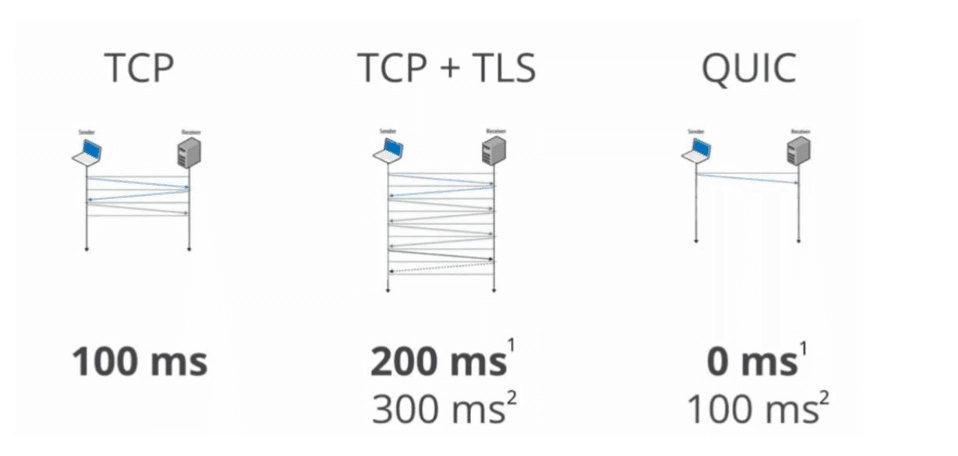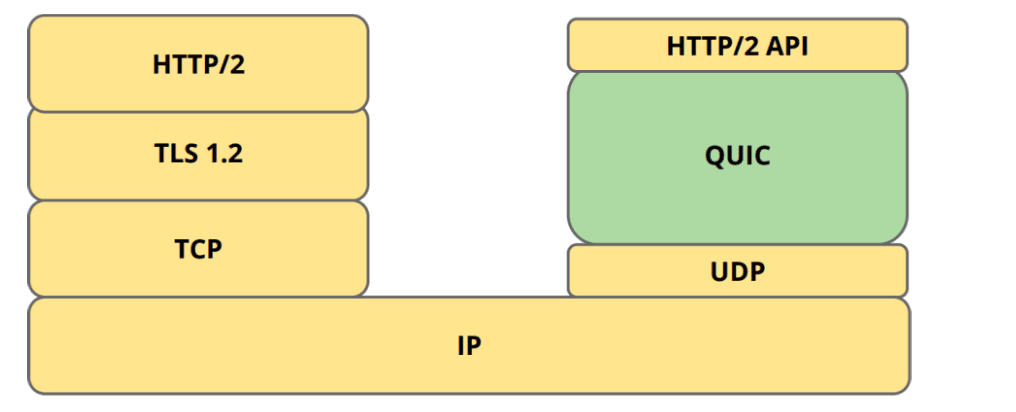In the ever-evolving landscape of internet protocols, QUIC (Quick UDP Internet Connection) has emerged as a game-changer. Developed by Google in 2013 and integrated into the Chromium project, QUIC has rapidly gained traction and is now set to become the foundation of HTTP/3. This article delves into the intricacies of QUIC, its advantages over traditional protocols, and its impact on the future of web communication.
What is QUIC?
QUIC is a transport layer protocol built on top of UDP (User Datagram Protocol). It's designed to combine the functionality of TCP (Transmission Control Protocol), TLS (Transport Layer Security), and HTTP/2 into a single, more efficient protocol. As per the official QUIC project page, QUIC can be thought of as implementing TCP+TLS+HTTP/2 over UDP.
The Evolution of QUIC
- 2013: Google publicly announces QUIC
- 2015: IETF (Internet Engineering Task Force) includes QUIC in its draft standards
- 2018: IETF officially announces QUIC as the basis for HTTP/3
Why QUIC? Addressing TCP's Limitations
QUIC was developed to address several long-standing issues with TCP:
Protocol Ossification: TCP's widespread implementation in operating systems and network devices makes it difficult to modify or improve.
Connection Establishment Latency: TCP's handshake process, especially when combined with TLS, results in significant delays.
Head-of-Line Blocking: TCP's strict ordering of data can lead to delays when packets are lost or reordered.
Inflexibility: TCP's implementation at the operating system level makes it challenging to update and improve.
QUIC's Key Features and Advantages
1. Reduced Latency
QUIC significantly reduces connection establishment time:
- 0-RTT (Round Trip Time) in specific scenarios
- 1-RTT in general cases, compared to TCP's 3-RTT

2. Improved Reliability
Despite being based on UDP, QUIC implements its own reliability mechanisms:
- Advanced congestion control algorithms
- Packet retransmission
- Forward Error Correction (FEC)
3. Better Connection Migration
QUIC supports seamless connection migration between networks (e.g., from Wi-Fi to cellular).
4. Native Encryption
QUIC integrates security features, making all connections encrypted by default.
5. Multiplexing Without Head-of-Line Blocking
QUIC allows multiple streams of data within a single connection without one stream blocking others.
6. Flow Control
QUIC implements advanced flow control mechanisms to prevent overwhelming receivers.
QUIC vs Traditional Protocols
The following diagram illustrates how QUIC compares to traditional protocol stacks:

Real-World Applications and Adoption
Many major internet companies have started adopting QUIC:
- Google services
- Cloudflare
- Akamai
For instance, Tencent Cloud's live streaming service fully supports QUIC acceleration. Using Tencent Cloud's client SDK, customers can reduce live streaming latency from 3-5 seconds to as low as 500ms without any modifications.
The Future of QUIC
As QUIC becomes the foundation for HTTP/3, we can expect:
- Wider adoption across various internet services
- Continued improvements and optimizations
- Potential applications beyond web browsing, such as in IoT and real-time communication
Conclusion
QUIC represents a significant leap forward in internet protocol technology. By addressing the limitations of TCP and incorporating modern security and performance features, QUIC is poised to become the backbone of a faster, more reliable internet. As it continues to evolve and gain adoption, developers and businesses alike should stay informed about QUIC and consider its implementation in their web services.
For more detailed information about QUIC, visit the official QUIC project page.